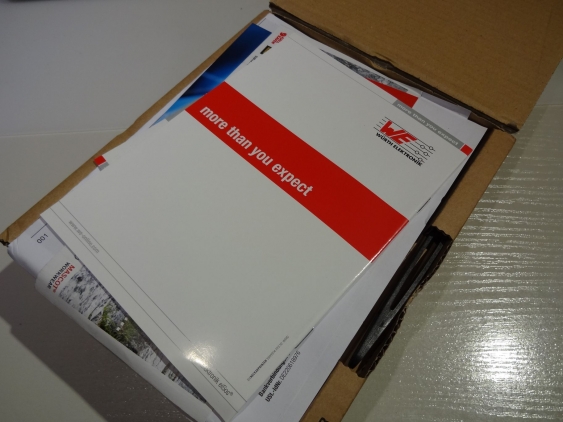« Another month, another contest - gimme wireless power!
| Main |AXP1G57 configurable logic demo board - first impressions »
Unboxing the Wireless power demo kit - first impressions
So Würth was really fast with sending the Wireless power demo kit - one of the advantages of living in Germany :)
This is what I found after opening the package:
If you look closely, you see the small tweezers on the right. Indeed - more than I expected from a demo kit…
Unpacking the kit
After unpacking it, the demo kit can be found in a nice plastic box, containing everything you need:
On the bottom is the transmitter board (a BQ500212B EVM), with the transmit coil to the left. Its quite heavy, since if comes with a ferrite core plate underneath. Hidden under the LED demo board is the wireless power receiver (a BQ51013B EVM), together with a nice base for the coil. Würth also packs in a USB power supply able to deliver 6 watts (5 watt transmission power with about 80% efficency).
Taking everything out reveals then the USB cable, and allows a better look at the receiver (though I messed this up in the photo…). Its made out of a nice plastic stand, with the coil on the bottom, and the receiver circuit on the top. The LED board is then mounted on the pin headers on top of the receiver board.
Beam me some energy…
For me its first turn it on, then take it apart. So its time for powering this puppy up:
Looks quite nice, doesn’t it? Right now the distance between the coils is about 5 mm (there is a clear plate on top of the transmit coil, and the base of the receiver below the receive coil). And the LEDs light up even when the receiver is not touching the transmitter, so there is clearly some room Taking some measurements about the distance one can achieve will be done soon, for now I’m just happy that it works.
Reading the quick start guide for the kit revealed another nice detail Würth thought of (do you read manuals before trying out a new gadget?):
They added a small cutout in the box which allows hiding the transmitter in it while still being able to power it with the USB cable. This should simulate hiding the transmitter inside of e.g. furniture. As you can see the power transfer still works properly.
So now its time to do some measurements - but I will leave this for another post…




